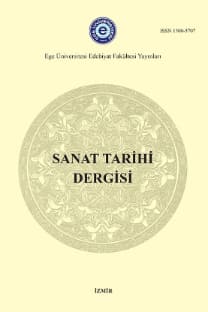EDİRNE YENİ SARAY KAZISI (SARAY- I CEDÎD- İ ÂMİRE) 2010 YILI ÇALIŞMALARI
Edirne’de Osmanlı Dönemi’nde inşa edilmiş iki önemli saray; Eski Saray (Saray- ı Atik) ve Yeni Saray (Saray-ı Cedîd-i Âmire) bulunmaktadır. Edirne Yeni Saray; Edirne’nin Sarayiçi olarak adlandırılan bölgesinde, Tunca Nehri’nin batısındaki alanda, II. Murad’ın saltanatının son yıllarında, 1450 yılında inşa edilmeye başlanmış ve hemen her dönemdeki ilave ve onarımlarla büyük bir kompleks haline gelmiştir. Pek çok yapısı II. Mehmed (1451-1481) zamanında inşa edilen ve bünyesinde çok farklı işlevli yaklaşık 100 civarında yapıyı barındıran bu saray, oldukça geniş bir alana yayılmaktaydı. İmparatorluğun Yeni Sarayı (Saray-ı Cedîd-i Âmire), yüzyıllar boyunca kullanımda kalmış ve pek çok önemli olaya (örn. IV. Mehmet’in sünnet şöleni, Osmanlı- Rus Savaşları ve Balkan Savaşları, vb.) şahit olmuştur. 19. Yüzyılın sonları ve 20. Yüzyılın başlarında, 1877-1878 Osmanlı- Rus Savaşı ve 1910- 1912 Balkan Savaşları sırasında, Saray tahribata uğramış ve birçok yapısı yıkılmıştır. Kaynak ve yayınlardan öğrendiğimize göre Edirne Yeni Saray’ın; 117 Oda, 21 Divanhane, 18 Hamam, 8 Mescit, 17 Kapı, 13 Koğuş, 4 Kiler, 5 Mutfak, 17 Kasır ve 6 Köprü’den meydana geldiği anlaşılmaktadır. Kuşkusuz bu bilgiler, arşiv belgeleri üzerindeki incelemeler ile sahada yapılacak kazı ve araştırmalarla daha sağlıklı halegelecektir. Saraydan günümüze az sayıda yapı ulaşmıştır. Bunlar; Matbah-ı Amire (Saray Mutfağı), Babüssade (Akağalar Kapısı), Cihannüma Kasrı, Kum Kasrı Hamamı, Adalet Kasrı, Fatih Köprüsü, Kanuni Köprüsü, Şehabeddin Paşa Köprüsü, Av Köşkü, Su Maksemi, Namazgahlı Çeşme’dir. Ülkemizin olduğu kadar dünyanın da en önemli kültürel mirasları arasında yer alan, Osmanlı Arkeolojisi ve saray hayatı bakımlarından büyük önem taşıyan Edirne Yeni Saray’da son yıllarda; TBMM Başkanlığı, Kültür ve Turizm Bakanlığı, Edirne Valiliği İl Özel İdaresi ve Bahçeşehir Üniversitesi’nin kurumsal ilgi ve destekleriyle kazı, restorasyon ve koruma çalışmaları sürdürülmektedir. Gösterilen bu yakın ilgi ve destek, onlarca yıl kaderine terk edilen Edirne Yeni Saray’ın makus talihinin değişmesini sağlamıştır
Restorations, Excavations and Reseraches Carried out in Edirne Imperial Palace in 2010
Other than two significant palaces built in Edirne during the Ottoman era, the Saray- ı Atik (Old Palace) and the Saray-ı Cedîd-i Âmire (New Imperıal Palace). The building program of the New Imperial Palace (Saray-ı Cedîd-i Âmire) started in the last years of Murad II’s reign, in what is today the Sarayiçi Quarter of Edirne to the west of the Tunca River and eventually became a large complex with extensions and renovations dateable to almost every era. This palace, significant portions of which were built during the reign of Mehmed II (1451-1481), was comprised of nearly a hundred structures with various functions and was spread over a vast expanse. The New Imperial Palace (Saray-ı Cedid-i Amire), remained in use for centuries and was witness to many important historical events (e.g. Mehmed IV’s circumcision feast, the Ottoman-Russo Wars and the Balkan Wars, etc.). In the closing decades of the 19th and early 20th centuries, during the 1877-78 Ottoman-Russo War and the 1910-1912 Balkan Wars, the palace suffered much destruction and many of its buildings were destroyed. From the documents and publications at hand we know that Edirne’s New Imperial Palace (Saray-ı Cedîd-i Âmire) was comprised of: 117 Chambers, 21 Divanhanes, 18 Hamams, 8 Mescits, 17 Doors, 13 Dormitories, 4 Cellars, 5 Kitchen, 17 Pavilions ve 6 Bridges. Doubtlessly, these figures are going to be more credible after the examination of archival documents and the excavations currently being carried out in the field are completed. As a result only a few of its original structures are extant today. Among these are: the Matbah-ı Amire (Royal Kitchens), Babüssaade (Main Entrance Gateway), Cihannüma Kasrı (Eye on the World Pavilion), Kum Kasrı (Sand Pavilion) Kum Kasrı Hamamı (Sand Pavilion Bath), Adalet Kasrı (Justice Pavilion), Fatih Köprüsü (Sultan Mehmed the Conqueror’s Bridge), Kanuni Köprüsü (Sultan Süleyman the Lawgiver’s Bridge), Şehabeddin Paşa Köprüsü (Şehabeddin Paşa’s Bridge), Av Köşkü (Hunting Lodge), Su Maksemi (Water Depot), Namazgâhlı Çeşme (Fountain with Open Air Mosque). Edirne’s New Imperial Palace, is not only an imporant cultural monument for Turkey but also for the whole world. It is a particularly significant site for Ottoman archeology and for those attempting to recreate life in the Ottoman Palaces. In recent years, restoration and maintenance operations are ongoing thanks to the instutional interest and support provided by the President of the Turkish Grand National Assembly, the Turkish Ministry of Culture and Tourism, the Edirne Governor’s office, and İstanbul’s Bahçeşehir University. Their support has made a positive impact on the preservation and restoration of this important site which had been ignored throughout most of the twentieth century. While some of these structures are in ruins, others are preserved and are currently undergoing restoration as part of the ongoing archeological excavations of the Palace complex under the direction of Assoc. Prof. Dr. Mustafa Özer of Bahçeşehir University.
